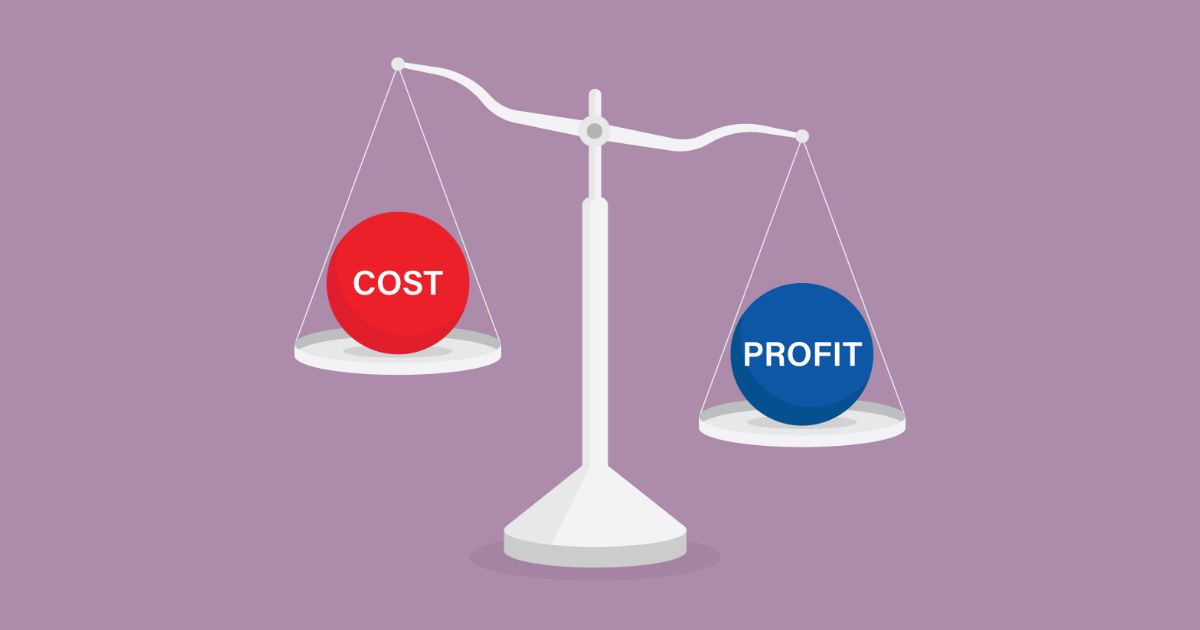Your purchasing department just saved the company $500 on that trade show banner order. Three weeks later, you’re standing in an empty booth space holding a pixelated mess that arrived two days late, watching potential customers walk past your $50,000 exhibit investment. Suddenly, that procurement “win” feels like a massive loss.
The lowest bid trap snares even the most experienced marketing teams because traditional procurement thinking doesn’t translate well to large format printing. Unlike buying office supplies or raw materials, print procurement involves creative assets, tight deadlines, and zero tolerance for failure when your brand is on public display.
The Hidden Arithmetic of Cheap Printing
Every seasoned event manager has lived through this scenario: the $200 banner that fails spectacularly costs far more than the $400 banner that performs flawlessly. The hidden costs accumulate quickly and often exceed the original “savings” by thousands of dollars.
When cheap printing goes wrong, the immediate expenses include emergency reprinting, expedited shipping, and installation delays. But the deeper costs cut much harder. Your team’s time shifts from strategic work to crisis management. Client relationships suffer when promised deliverables don’t materialize. Most painfully, opportunities disappear when your marketing materials fail at crucial moments.
A major advertising agency recently shared their procurement disaster story. They chose the lowest bidder for a client’s retail rollout graphics, saving $3,000 on the initial order. When the graphics arrived with incorrect colors and poor finishing, the emergency correction process cost $8,500 in reprinting and expedited shipping. The real damage, however, was the client relationship strain that took months to repair and nearly cost them the account.
Quality Partnership vs. Vendor Relationship
The fundamental disconnect in print procurement stems from treating printing vendors like commodity suppliers rather than quality partners. This mindset works fine when buying standardized products with predictable specifications, but large format printing involves custom solutions for unique applications.
A quality print partner brings expertise that prevents expensive mistakes before they happen. They review your files for potential issues, recommend appropriate materials for your specific application, and build quality control into their process. They understand that your success directly impacts their reputation, creating alignment that simple vendor relationships lack.
Consider the total cost equation differently. A quality printer might charge more upfront but includes file optimization, color proofing, protective packaging, and installation support. The cheap printer quotes basic printing only, leaving you to discover and pay for these necessities separately, usually under time pressure when costs multiply.
Risk Assessment Beyond Price Comparison
Smart procurement teams evaluate risk factors alongside pricing because print failures carry consequences that extend far beyond the immediate project. The risks multiply when you consider tight event deadlines, brand visibility, and client expectations.
Material selection represents a major risk area often overlooked in price-focused procurement. The $150 banner made with calendered vinyl might look identical to the $250 banner made with cast vinyl in your office, but only one will survive outdoor installation without shrinking and fading. Understanding these distinctions requires print expertise, not just procurement efficiency.
Installation capabilities present another critical risk factor. Many low-cost printers focus solely on production, leaving installation planning to chance. When your graphics can’t be properly installed due to venue restrictions, material limitations, or access issues, the entire project fails regardless of print quality.
Deadline reliability becomes crucial when considering total project risk. Marketing campaigns have fixed launch dates that can’t slip without significant consequences. A printer’s track record for on-time delivery should weigh heavily in vendor evaluation, often outweighing modest price differences.
Measuring True Return on Investment
Calculating the real ROI of print partnerships requires looking beyond initial cost comparisons to measure total project success rates. The most expensive printer becomes the best value when they consistently deliver projects on time, on budget, and on specification.
Start by tracking hidden costs across your print projects: reprints, rush charges, installation delays, and team time spent managing print issues. Many organizations discover these hidden costs equal or exceed their annual print budget, making quality partnerships an immediate cost savings opportunity.
Factor in opportunity costs when evaluating print vendor performance. Every hour your marketing team spends troubleshooting print problems is time not spent on strategic initiatives. Every client meeting focused on explaining print failures is a meeting not focused on growing the relationship.
Building Procurement Strategies That Actually Work
Effective print procurement requires procurement teams to partner with marketing throughout the vendor evaluation process. Marketing understands the application requirements, quality standards, and strategic importance of each project, while procurement brings vendor management and cost control expertise.
Develop vendor evaluation criteria that balance cost with capability:
- Track record for meeting deadlines under pressure
- Quality control processes and defect rates
- Installation expertise and venue experience
- File preparation capabilities and design support
- Financial stability and equipment redundancy
Create procurement processes that account for the custom nature of large format printing. Standard RFP formats often fail to capture the nuances that determine project success, leading to vendor selection based on incomplete information.
The Path Forward
The most successful organizations treat print procurement as a strategic partnership rather than a cost center. They recognize that print quality directly impacts brand perception, event success, and client relationships. While this approach might increase immediate print costs, it typically reduces total project costs while dramatically improving success rates.
Your procurement team isn’t wrong to focus on cost control, but they need better tools to measure true costs in the printing industry. By expanding the evaluation criteria beyond lowest bid and measuring total cost of ownership, procurement can drive real savings while supporting marketing objectives.
The goal isn’t to spend more on printing – it’s to spend wisely on printing partnerships that deliver consistent results when your brand is on public display.
At XL Digital, we understand that procurement teams need to balance cost control with project success. That’s why we provide detailed project breakdowns that help you calculate true total cost of ownership, not just print pricing. Our quality control processes, installation expertise, and deadline reliability are designed to eliminate the hidden costs that turn “savings” into expensive mistakes. When your next large format project absolutely has to succeed, let’s discuss how a real partnership approach can deliver both cost control and peace of mind. Contact XL Digital today to experience the difference between a print vendor and a print partner.

